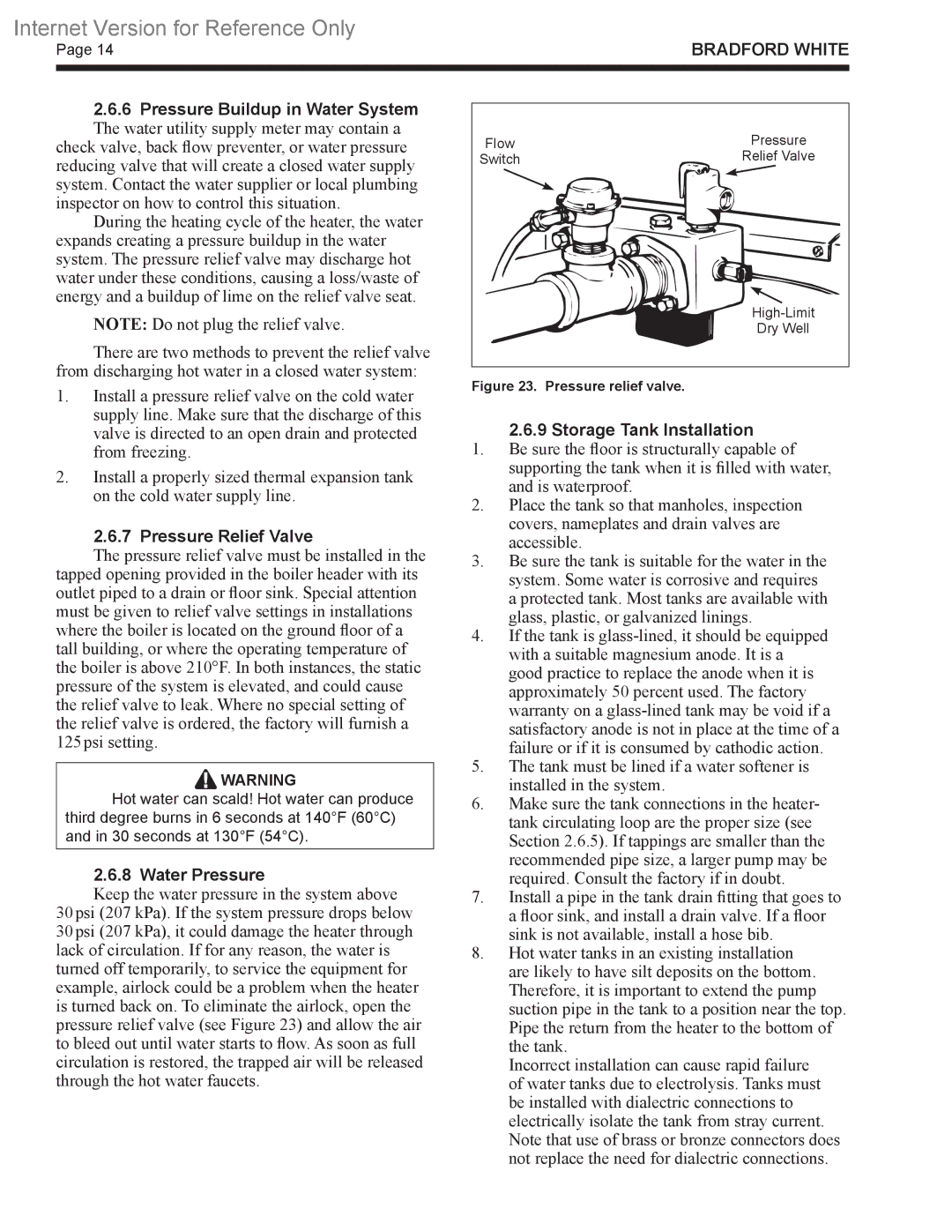B4 specifications
Bradford-White Corp B4 is a remarkable water heater that embodies innovation, efficiency, and reliability. This product is designed to meet the stringent demands of both residential and commercial applications, making it a versatile choice for various users.One of the standout features of the Bradford-White B4 is its high-efficiency operation. With advanced insulation technologies, this water heater minimizes heat loss, allowing it to perform efficiently while conserving energy. This efficiency translates to significant cost savings on utility bills, making the B4 an economical option over its lifespan.
Moreover, the B4 employs a robust and durable construction. Engineered with top-quality materials, it boasts a glass-lined tank that prevents corrosion and extends the longevity of the unit. This durable design ensures that users can rely on their water heater for many years, thus reducing the frequency of replacements and repairs.
The Bradford-White B4 is equipped with state-of-the-art technologies to enhance user convenience. Among these technologies is the ICON System, which features an advanced gas control. This control system allows for precise temperature management and ensures optimal performance. Additionally, the B4 comes with a built-in diagnostic system that provides insight into the operation of the unit, helping users identify potential issues before they escalate.
Another significant characteristic of the B4 is its variety of sizes and configurations. This versatility allows for easy installation in different spaces, whether it be a compact utility room or a larger commercial setup. Available in various capacities, the B4 can efficiently deliver hot water for various needs, catering to families of different sizes or businesses with diverse requirements.
Safety is also a top priority for Bradford-White. The B4 includes safety features such as a temperature and pressure relief valve, which acts as a safeguard against potential malfunctions. This adds an extra layer of peace of mind for users concerned about operational safety.
In summary, the Bradford-White Corp B4 combines high efficiency, durable construction, advanced technologies, versatility, and safety features. This makes it more than just a water heater—it is a dependable solution for ensuring hot water availability for various applications. Whether for a home or a commercial setting, the B4 represents a commitment to quality and performance that users have come to trust.

